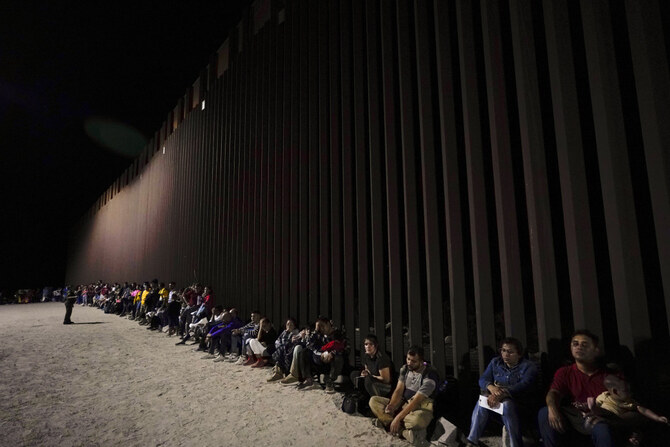LOS ANGELES: California is spearheading a new resistance to the incoming Donald Trump administration that will test the power of Democratic states to battle mass deportation, defend reproductive rights and combat climate change.
Trump’s sweeping election victory this week came off the back of promises to swiftly expel millions of illegal immigrants and roll back nationwide environmental protections. Critics fear his allies could move to restrict access to abortion medication.
But under the US constitution, states wield significant power and any such moves will certainly be met with lawsuits.
California’s top prosecutor stood in front of San Francisco’s Golden Gate Bridge this week and vowed to “take on the challenges of a second Trump Administration — together.”
“We lived through Trump 1.0. We know what he’s capable of,” said California Attorney General Rob Bonta.
“We’ll continue to be a check on overreach and push back on abuse of power,” he promised.
Governors and attorneys general of other liberal states including New York, Illinois, Oregon and Washington have made similar proclamations.
“If you try to harm New Yorkers or roll back their rights, I will fight you every step of the way,” Governor Kathy Hochul vowed.
“You come for my people, you come through me,” Illinois Governor J.B. Pritzker said, as Democratic prosecutors across the nation coordinate their strategies.
The pre-emptive maneuvers have swiftly drawn the ire of Trump, who singled out California Governor Gavin Newsom in an angry social media riposte Friday.
“He is using the term ‘Trump-Proof’ as a way of stopping all of the GREAT things that can be done to ‘Make California Great Again,’ but I just overwhelmingly won the Election,” complained Trump.
Hindrance by litigation
State plans to disrupt his agenda will bring an unwelcome sense of deja vu for Trump, whose efforts to rescind Barack Obama’s immigration and health care policies during his first term were repeatedly stymied in court.
During the last Trump administration, California alone sued over 100 times in a variety of areas, slowing down or restricting its policies. Republican states echoed that strategy under Joe Biden’s administration.
“It was as successful as you can get,” said Julian Zelezer, professor of political history at Princeton University.
“States, especially a state as large as California, do have the power to resist some of the changes that will come from the administration, to uphold emissions regulations and other laws, including on reproductive rights.”
A benefit of litigation is that “cases move about as fast as snails,” said Kevin Johnson, a law professor at University of California, Davis.
“Some cases go around the lower courts, and by the time they hit the Supreme Court, there’s a new president,” he told AFP.
“Sanctuary states”
Immigration is expected to be a flashpoint in the looming battle.
Republican states may cooperate with the Trump administration in identifying and detaining undocumented people. But Democratic states are likely to refuse.
During Trump’s previous term California was the first to declare itself a “sanctuary state,” prohibiting local law enforcement from working with federal agents to arrest illegal immigrants.
Trump could withhold federal funding to certain states as a means of exerting pressure.
He has also floated more radical measures, including massively expanding a process called “expedited removal” to evict undocumented people without court hearings, or even using the military to arrest suspected illegal immigrants.
But “there would almost immediately be a request for a preliminary injunction,” predicted Johnson.
“If you send the military on the border” to detain or deport immigrants, “it is unprecedented in all kinds of ways, and it raises all kinds of issues.”
“As California goes, so goes the nation”
One downside for states is the enormous financial cost of countless legal battles.
“State budgets are tight, and so that money has to come from somewhere else,” said Zelezer.
With Trump having won the popular vote and increased his vote share even in most liberal states, “politically, it might be a little harder as they try to move forward with doing this again,” he said.
Still, California’s leaders’ zeal in opposing Trump appeared undaunted.
“As is so often said, as California goes, so goes the nation,” said Bonta.
“In the days and months and years to come, all eyes will look west.”



























